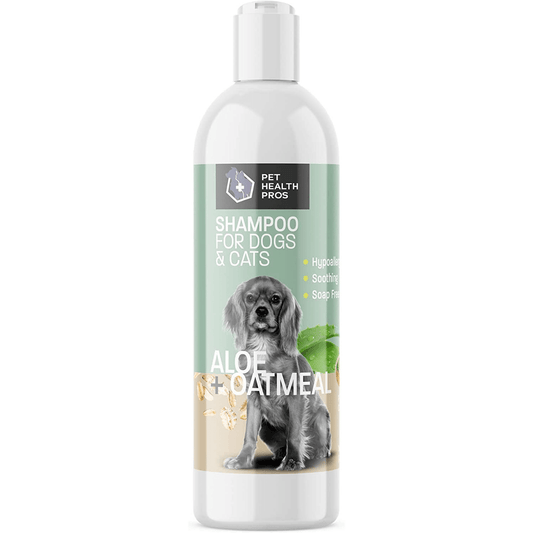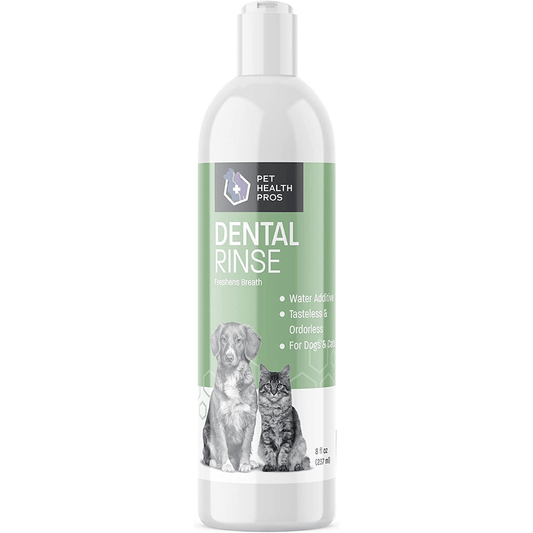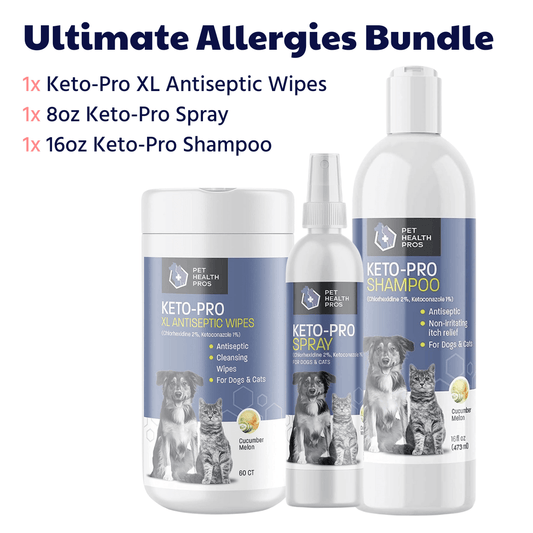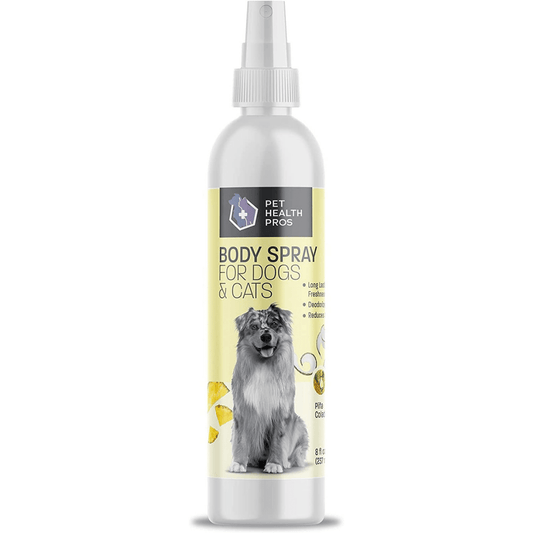When it comes to managing your dog's chewing habits, finding an effective repellent can be a game-changer. Dogs chew for various reasons, including natural instincts, boredom, and teething. Understanding the underlying causes and choosing the right repellent can help protect your belongings and ensure your furry friend remains safe and happy.
Key Takeaways
- Understanding the reasons behind your dog's chewing is crucial for effective management.
- There are various types of dog chewing repellents, including natural, commercial, and DIY solutions.
- Proper application techniques and safety precautions are essential for the effective use of repellents.
- Training techniques such as positive reinforcement and redirecting chewing behavior can complement the use of repellents.
- Avoid common mistakes like over-relying on repellents and ignoring underlying issues to achieve the best results.
Understanding Why Dogs Chew
Natural Instincts and Behaviors
Chewing is a natural behavior for dogs, rooted in their instincts. It helps them explore their environment, keep their teeth clean, and relieve stress. Puppies, in particular, chew to alleviate the discomfort of teething.
Common Triggers for Chewing
Several factors can trigger chewing in dogs, including boredom, anxiety, and lack of exercise. Dogs may also chew to seek attention or because they find the texture and taste of certain objects appealing.
The Importance of Addressing Chewing
Addressing chewing behavior is crucial to prevent damage to household items and ensure the safety of your pet. Unchecked chewing can lead to ingestion of harmful materials, which can cause health issues. Understanding the root cause of your dog's chewing is the first step in addressing the behavior effectively.
By recognizing and addressing the reasons behind your dog's chewing, you can create a more harmonious living environment for both you and your pet.
Types of Dog Chewing Repellents
When it comes to preventing your dog from chewing on unwanted items, there are several types of repellents available. Choosing the right type can make a significant difference in effectiveness and safety for your pet.
How to Apply Dog Chewing Repellent Effectively
Choosing the Right Product
Selecting the appropriate dog chewing repellent is crucial for success. Consider factors such as the dog's age, size, and specific chewing habits. Some products are better suited for puppies, while others are designed for adult dogs. Always read the product label and consult with a veterinarian if unsure.
Application Techniques
Proper application of the repellent ensures its effectiveness. Follow these steps:
- Clean the area where the repellent will be applied.
- Apply a small amount of the repellent to a cloth or cotton ball.
- Gently rub the repellent onto the object or area you want to protect.
- Reapply as needed, especially after cleaning or exposure to water.
Safety Precautions
When using dog chewing repellents, safety should be a top priority. Ensure the product is non-toxic and safe for pets. Avoid applying repellents to areas where your dog eats or sleeps. Keep the product out of reach of children and other pets. If any adverse reactions occur, discontinue use immediately and consult a veterinarian.
Applying dog chewing repellent correctly can significantly reduce unwanted chewing behavior, but it should be part of a comprehensive approach that includes training and providing appropriate chew toys.
Training Techniques to Complement Repellent Use
Positive reinforcement is a powerful tool in training your dog to avoid chewing on unwanted items. Reward your dog with treats, praise, or playtime whenever they choose appropriate chew toys over furniture or other household items. This method helps to build a positive association with the desired behavior.
When you catch your dog chewing on something they shouldn't, calmly redirect their attention to a suitable chew toy. Consistently offering an alternative helps your dog understand what is acceptable to chew on. Over time, this will reduce the likelihood of them returning to the unwanted behavior.
Training your dog requires consistency and patience. Ensure that all family members are on the same page regarding the rules and training techniques. Inconsistent messages can confuse your dog and hinder their progress. Remember, patience is key; it may take some time for your dog to fully grasp the new behaviors.
Training your dog to avoid chewing on unwanted items is a gradual process. Stay committed and patient, and you'll see positive results over time.
Recommendations for Top Dog Chewing Repellent Products
Vet-Approved Products
When it comes to choosing a dog chewing repellent, vet-approved products are often the safest and most effective. These products have been tested for safety and efficacy, ensuring they won't harm your pet. Look for repellents that are recommended by veterinarians and have positive reviews from other pet owners.
Customer Favorites
Customer favorites are usually a good indicator of a product's effectiveness. These repellents have been tried and tested by numerous pet owners and have received high ratings. Popular choices often include natural ingredients and are easy to apply. Reading customer reviews can provide valuable insights into how well a product works.
Budget-Friendly Options
If you're on a budget, there are still plenty of effective dog chewing repellents available. Budget-friendly options often use simple, natural ingredients that are both safe and effective. Don't compromise on quality; even affordable products can provide excellent results. Look for products that offer a good balance between cost and effectiveness.
Choosing the right dog chewing repellent can make a significant difference in managing your pet's chewing behavior. Always consider the safety, effectiveness, and cost of the product before making a decision.
Common Mistakes to Avoid When Using Dog Chewing Repellents
Over-Reliance on Repellents
While dog chewing repellents can be effective, over-reliance on these products can lead to a lack of proper training. It's essential to combine repellents with behavioral training to achieve long-term success.
Ignoring Underlying Issues
Chewing can often be a symptom of underlying issues such as anxiety, boredom, or nutritional deficiencies. Addressing these root causes is crucial for effective management. Ignoring them can render repellents ineffective.
Inconsistent Application
Consistency is key when using dog chewing repellents. Inconsistent application can confuse your dog and reduce the effectiveness of the repellent. Make sure to apply the product regularly and as directed.
Combining repellents with proper training and addressing underlying issues will lead to more effective and lasting results.
Additional Tips for Preventing Chewing
Providing Adequate Exercise
Ensuring your dog gets enough physical activity is crucial in preventing unwanted chewing. Regular exercise helps to burn off excess energy that might otherwise be directed towards destructive behaviors. Aim for at least 30 minutes to an hour of exercise daily, depending on your dog's breed and energy level.
Offering Chew Toys
Providing a variety of chew toys can significantly reduce the likelihood of your dog chewing on inappropriate items. Choose toys that are durable and safe for your dog's size and chewing strength. Rotate the toys regularly to keep your dog interested and engaged.
Creating a Safe Environment
A safe environment is essential for preventing destructive chewing. Remove any items that your dog might be tempted to chew on, such as shoes, remote controls, and children's toys. Instead, provide a designated area with appropriate chew toys and bones. This approach not only protects your belongings but also helps in addressing the root cause of the chewing behavior.
Combining no chew spray with behavioral solutions can lead to lasting results. It's important to address the root cause of the chewing to ensure long-term success.
To further ensure your pet's well-being and prevent unwanted chewing, consider exploring our range of specialized products. From anti-chew sprays to engaging toys, we have everything you need to keep your furry friend happy and healthy. For more tips and product recommendations, visit our website today!
Conclusion
In conclusion, ensuring your dog has a safe and effective chewing repellent is essential for their well-being and the preservation of your belongings. By understanding the different types of repellents available and considering factors such as ingredients, effectiveness, and safety, you can make an informed decision that best suits your pet's needs. Remember, consistency and patience are key when training your dog to avoid unwanted chewing behaviors. At Pet Health Pros, we are committed to providing superior, affordable pet health supplies, crafted in collaboration with veterinarians and made with top-grade ingredients. Explore our range of products on our online store or Amazon storefront to find the perfect solution for your pet. Together, we can ensure healthier pets and happier lives.
Frequently Asked Questions
What are some natural dog chewing repellents?
Natural dog chewing repellents include apple cider vinegar, citrus sprays, and essential oils like eucalyptus or peppermint. These substances have strong smells that dogs typically dislike.
Are commercial dog chewing repellents safe for my pet?
Most commercial dog chewing repellents are formulated to be safe for pets. However, it is always important to read the label and consult with your veterinarian if you have any concerns.
How often should I apply the chewing repellent?
The frequency of application depends on the product you are using. Generally, you should reapply the repellent every few days or after the scent fades. Always follow the manufacturer’s instructions.
Can I make my own dog chewing repellent at home?
Yes, you can create DIY dog chewing repellents using household ingredients like vinegar, lemon juice, or cayenne pepper. Be sure to test a small amount first to ensure your dog does not have an adverse reaction.
What should I do if my dog ingests the chewing repellent?
If your dog ingests any chewing repellent, contact your veterinarian immediately. Bring the product's label with you to provide information about the ingredients.
Is it necessary to combine training with the use of chewing repellents?
Yes, combining training techniques such as positive reinforcement and redirecting chewing behavior with the use of repellents is essential for effectively curbing your dog's chewing habits.









